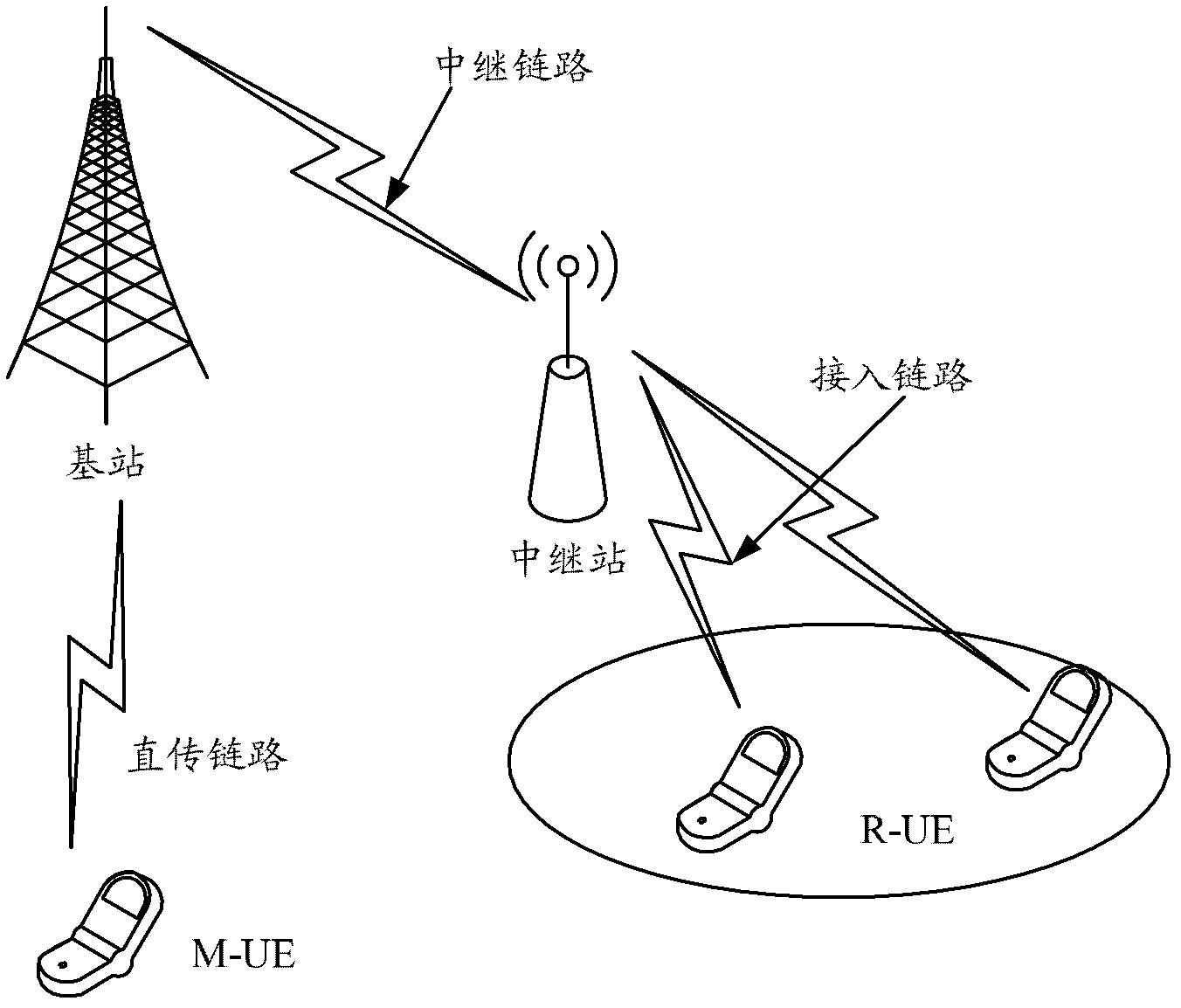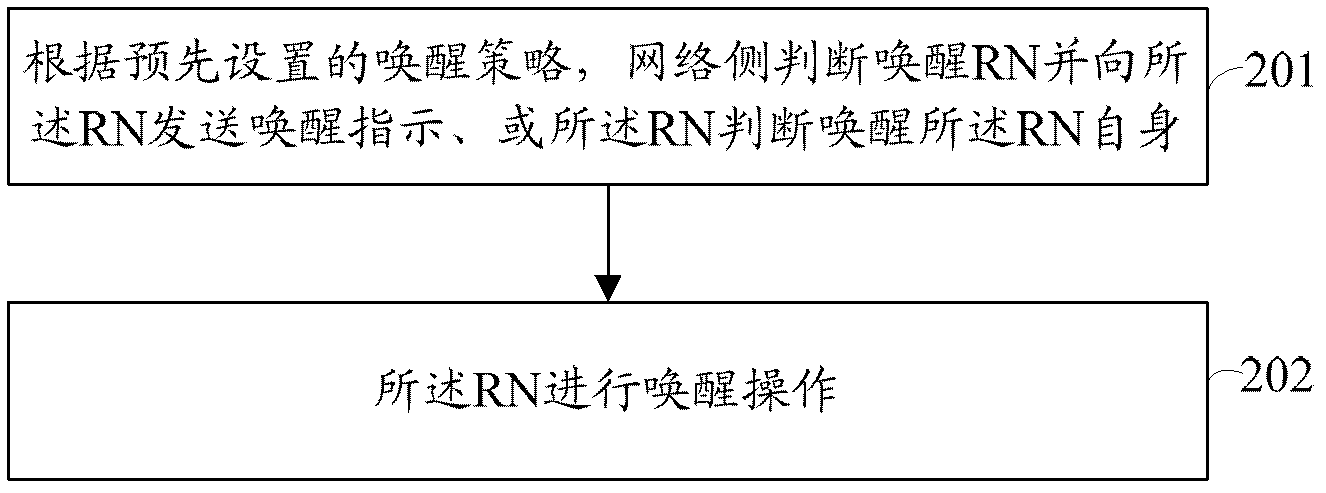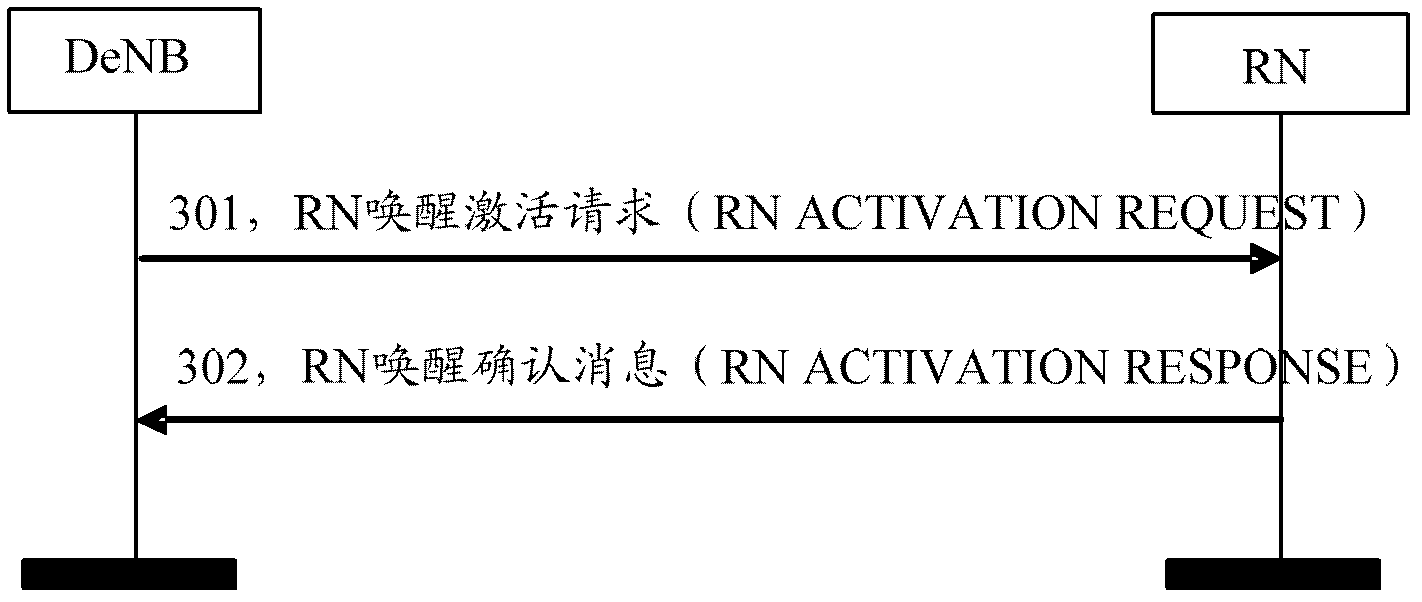Relay node awaking method and system
A relay station and timing wake-up technology, which is applied to the wake-up method and system field of the relay station, can solve the problem that the wake-up processing method cannot be directly applied to the adjustment of the working state, and achieve the effect of improving network coverage and network throughput
- Summary
- Abstract
- Description
- Claims
- Application Information
AI Technical Summary
Problems solved by technology
Method used
Image
Examples
Embodiment 1
[0086] In this embodiment, the RN is deployed in a hotspot area to balance and share network loads and ensure user service performance.
[0087] In this scenario, if image 3 As shown, the specific process of RN awakening may include the following steps:
[0088] Step 301: In the scenario of this embodiment, the user density and service requirements have a certain time regularity, the OAM manager configures and pre-sets the wake-up policy in the DeNB according to the time characteristics of the user; when the time set by the wake-up policy arrives, For example, at 7 o'clock in the morning, the DeNB decides and sends the RN wake-up request (RN ACTIVATION REQUEST) to the RN to instruct the wake-up of the RN;
[0089] Step 302: After receiving the RN activation request (RN ACTIVATION REQUEST), the RN enters the working mode from the sleep mode, starts the RN cell service, and feeds back the RN wakeup confirmation message (RN ACTIVATION RESPONSE) to the DeNB.
Embodiment 2
[0091] In this embodiment, the RN is deployed on a high-speed train, and switches between corresponding eNBs as the train moves, and selects the current eNB as the DeNB of the RN, and the RN maintains the connection with the network side and the performance of the Un interface, and The R-UE is further provided with services through the DeNB.
[0092] In this scenario, since the distance between RN and DeNB changes in real time, as the train enters the station, RN connects to the eNB near the station as DeNB. For the working mode, a wake-up policy is set in advance on the DeNB that may serve as the RN. The wake-up policy may specifically be: wake up the RN when the distance between the RN and the DeNB reaches a preset distance threshold. Specifically, in this embodiment, as Figure 4 As shown, the specific process of RN awakening may include the following steps:
[0093] Step 401: When the train leaves the station, the DeNB can obtain the distance between the RN and itself in...
Embodiment 3
[0096] In this embodiment, the RN is deployed on a high-speed train, and switches between corresponding eNBs as the train moves. Provide services for R-UE.
[0097] In this scenario, since the distance between the RN and the DeNB changes in real time, as the train enters the station, the RN accesses the eNB near the station, which serves as the current DeNB of the RN, and the RN enters sleep mode after the train enters the station. However, as the parking situation of the trains in the station changes, the DeNB can decide whether to wake up all or part of the RNs to enter the working mode according to the number of RNs connected at the same time. Configure the RN number threshold on the DeNB, and configure the following wake-up strategy: when the number of currently accessed RNs is less than the pre-configured RN number threshold, wake up the RN. For example, if the preset threshold for the number of RNs is 5, then because other trains leave the station, correspondingly, the ...
PUM
 Login to View More
Login to View More Abstract
Description
Claims
Application Information
 Login to View More
Login to View More - R&D
- Intellectual Property
- Life Sciences
- Materials
- Tech Scout
- Unparalleled Data Quality
- Higher Quality Content
- 60% Fewer Hallucinations
Browse by: Latest US Patents, China's latest patents, Technical Efficacy Thesaurus, Application Domain, Technology Topic, Popular Technical Reports.
© 2025 PatSnap. All rights reserved.Legal|Privacy policy|Modern Slavery Act Transparency Statement|Sitemap|About US| Contact US: help@patsnap.com



